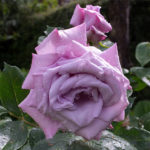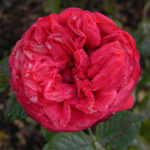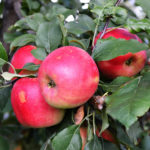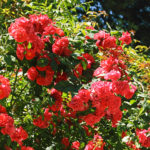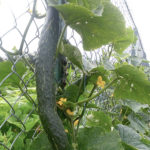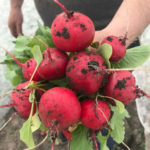Apple variety Aphrodite
Aphrodite is an apple variety endowed with stable immunity to scab (Vf gene) with fruits of early winter ripening, bred in 1981 at VNIISPK from seeds from free pollination of hybrid form 814. Authorship belongs to E.N. Sedov, Z.M. Serova, E.A. Dolmatov and V.V. Zhdanov. The variety is undergoing a State test in the Central Black Earth Region. Since 2006 it has been zoned.
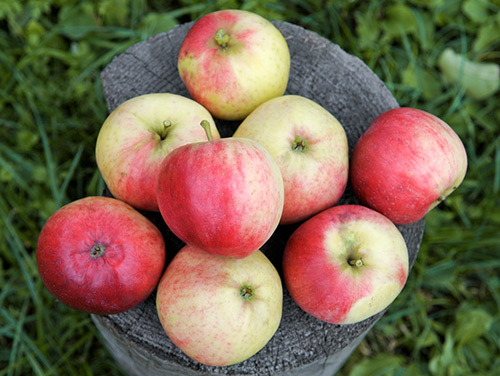
Photo: Andrey Vasiliev, Moscow
The trees are characterized by large size and fast growth rates. The crown is medium in density, round in shape. When leaving the trunk, the main branches form a close to right angle. The bark of the trunk and main branches has a smooth surface and a greenish-brown color. Fruiting is mixed, but most often the fruits are tied on simple and complex ringlets.
The shoots are thin, in shape - arcuate curved, in section - faceted, fleecy, brown in color. The buds are appressed, small, pubescent, conical in shape. Leaves are medium in size, oblong, long-pointed, with helical twisted tops, wavy edges with coarse serration. The leaf blade is dark green, with a yellowish tinge, matte, corrugated, with coarse venation, slightly fleecy. Petioles are of medium thickness and length, with pubescence.
The flower buds are large. The inflorescences are umbellate and have from 4 to 6 flowers. The flowers are of medium size, saucer-shaped, with slightly pink, rounded, weakly closed petals. Pink buds. The stigma of the pistils is at the same level as the anthers. The accrete column of pistils is pubescent.
The fruits of the Aphrodite apple tree are of medium size (apple weight is 125 - 130 grams), beveled, moderately flattened, with wide ribs. The peel of apples is smooth, delicate, sliding, oily, glossy. At the moment of ripening, the main color is greenish, the integumentary color is expressed on most of the apple through a blurred, speckled-striped dark crimson blush. In the period of consumer maturity, the main color of apples changes to greenish-yellow, the integumentary color brightens and acquires a beautiful rich bright crimson color. The subcutaneous dots are gray, well-defined, and are very common on the apple skin. The stalks are medium in length and thickness, curved in shape. Funnel of shallow depth, blunt-conical shape. Closed cup. The saucer is furrowed, wide, shallow in depth. The heart is large. Seed chambers are closed. The sub-cup tube is short in length, saccular in shape. Seeds are of medium size, narrow, conical in shape, dark brown in color.
The pulp is white, with pink veins, dense, crispy, fine-grained consistency, juicy, with an excellent, very harmonious sweet and sour taste (less acid). Tasting assessment of the appearance of the fruits and their taste - 4.4 points. By chemical composition, apples contain: the total amount of sugars (12.0%), titratable acids (0.46%), ascorbic acid (11.5 mg / 100 g), P-active substances (367.8 mg / 100 g) ). The purpose of the fruit is universal. Transportability is good.
The time for the removable ripeness of the fruits of Aphrodite falls on the period from September 15th to 20th. In the refrigerator, apples remain fresh until the end of December. The apple tree is fast-growing, the trees bear fruit from the 4th - 5th year after planting. Yielding, annual fruiting. The average yield of young re-grafted trees (aged from 9 to 12 years) for 4 years (1995 - 1998) was 125 kg / ha (or up to 150 kg / village). For comparison: the yield of the control variety Antonovka ordinary for the same period reached only 46 c / ha.
The variety is characterized by increased winter hardiness in the conditions of Central Russia. In recent years, trees have not received damage from frost more than 1.0 points. Absolute scab resistance.
It is important to note that this apple tree is undemanding to the soil: different areas are suitable, and even the close occurrence of groundwater does not have a detrimental effect on the roots of trees. However, breathable, moisture-absorbing, fertile soils, sandy loam and loam are preferred.
The main advantages of the Aphrodite apple tree include: high consumer and commercial qualities of fruits, immunity to scab, and fairly high winter hardiness.
There were no significant shortcomings in the variety.
